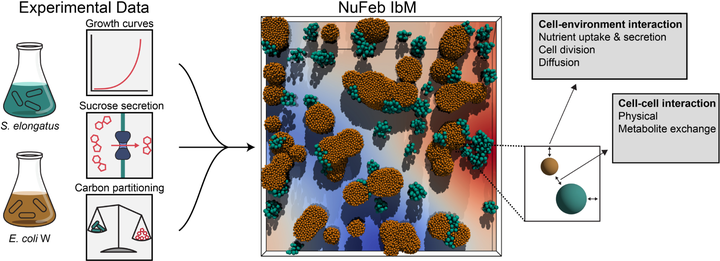Predicting partner fitness based on spatial structuring in a light-driven microbial community

Abstract
Microbial communities have vital roles in systems essential to human health and agriculture, such as gut and soil microbiomes, and there is growing interest in engineering designer consortia for applications in biotechnology (e.g., personalized probiotics, bioproduction of high-value products, biosensing). The capacity to monitor and model metabolite exchange in dynamic microbial consortia can provide foundational information important to understand the community level behaviors that emerge, a requirement for building novel consortia. Where experimental approaches for monitoring metabolic exchange are technologically challenging, computational tools can enable greater access to the fate of both chemicals and microbes within a consortium. In this study, we developed an in-silico model of a synthetic microbial consortia of sucrose-secreting Synechococcus elongatus PCC 7942 and Escherichia coli W. Our model was built on the NUFEB framework for Individual-based Modeling (IbM) and optimized for biological accuracy using experimental data. We showed that the relative level of sucrose secretion regulates not only the steady-state support for heterotrophic biomass, but also the temporal dynamics of consortia growth. In order to determine the importance of spatial organization within the consortium, we fit a regression model to spatial data and used it to accurately predict colony fitness. We found that some of the critical parameters for fitness prediction were inter-colony distance, initial biomass, induction level, and distance from the center of the simulation volume. We anticipate that the synergy between experimental and computational approaches will improve our ability to design consortia with novel function.